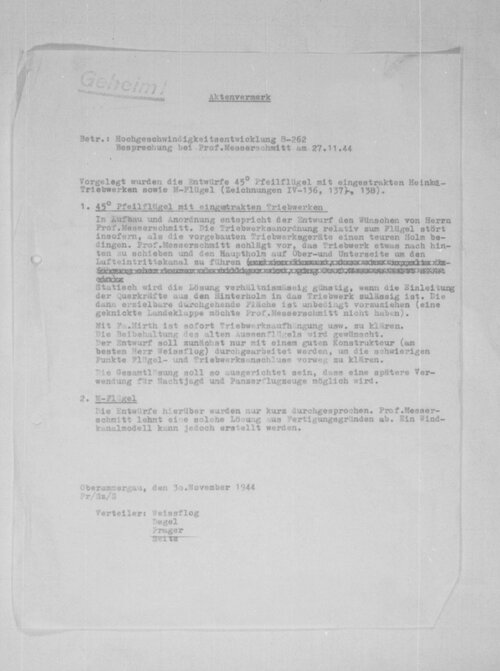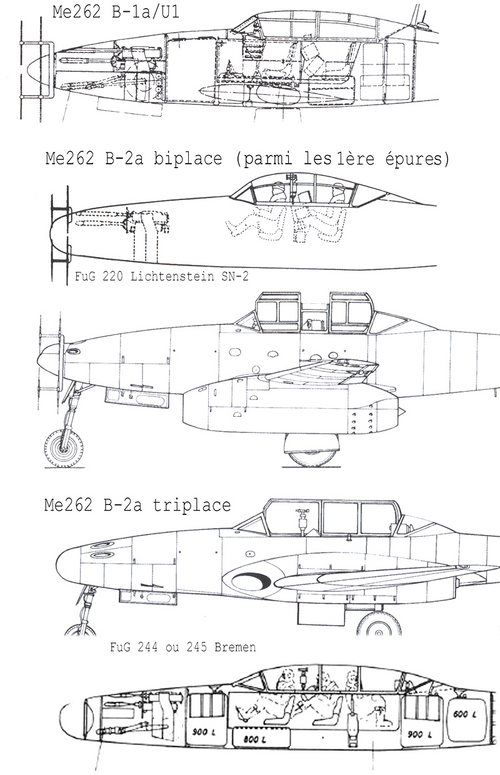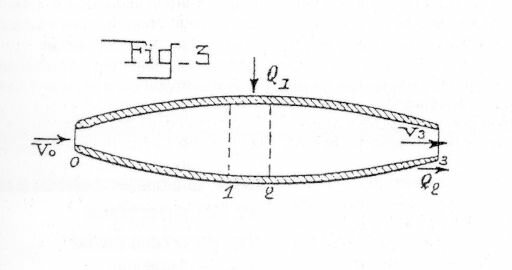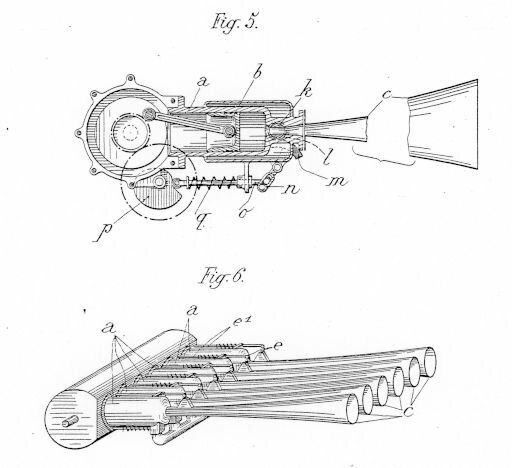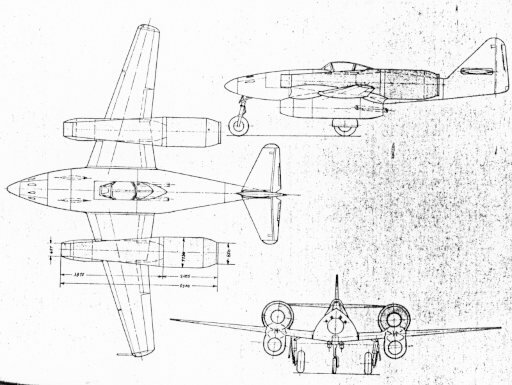You are using an out of date browser. It may not display this or other websites correctly.
You should upgrade or use an alternative browser.
You should upgrade or use an alternative browser.
Me 262 - Projects, Pre-Projects And Variants
- Thread starter moin1900
- Start date
sgeorges4
I really should change my personal text
- Joined
- 8 October 2017
- Messages
- 665
- Reaction score
- 334
any information on wich variant were considered for the X4 beside the A1a (hobby boss put 4 X4 under their A1a/U4 but I'm not really sure it would work well)

Also wondering if the X7 Rötkapchen was considered for the 262
http://modelarchives.free.fr/photoscopes/X4_P/index.html (french article on the X4 and X7)
Also wondering if the X7 Rötkapchen was considered for the 262
http://modelarchives.free.fr/photoscopes/X4_P/index.html (french article on the X4 and X7)
any information on wich variant were considered for the X4 beside the A1a (hobby boss put 4 X4 under their A1a/U4 but I'm not really sure it would work well)
Also wondering if the X7 Rötkapchen was considered for the 262
http://modelarchives.free.fr/photoscopes/X4_P/index.html (french article on the X4 and X7)
I've often wondered how well a wire-guided, optically tracked missile like the X-4 would have worked on a jet fighter. First generation, post-war, wire-guided anti-tank missiles were hard enough to use from helicopters and piston-engined light aircraft even when targeting stationary bunkers and slow-moving tanks. On these platforms, the missile operator and pilot were separate people. In an Me262 (or Ta183, Me P.1103, etc.), I suspect that X-4 would have imposed a very heavy workload on the pilot, especially given the high closing rate of the jet when attacking bombers and the need to keep an eye out for fighter escort. Unguided barrage rockets like R4M seem like a better match for jets.
- Joined
- 9 October 2009
- Messages
- 21,927
- Reaction score
- 13,533
The X-4 would likely have been most effective against bombers while they were locked into their bombing runs. I suspect they would also been useful against aircraft taking off and landing from airfields.
- Joined
- 3 June 2006
- Messages
- 3,092
- Reaction score
- 3,939
Just so you know and to members especially, who understand German:
Last week part 2 of the German magazine "Flugzeug Classic Extra - Number 14" about the Messerschmitt Me 262 was published here in Germany.
Link: https://verlagshaus24.de/me-262-teil-2
No e-paper version so far.
In this copy is a nice three-view drawing of the Me 262 V7 "VI+AB" shown. For me unknown, this prototype had an installed pressurized canopy. Unfortunately the prototype crashed and exploded at Lechfeld on May 19th, 1944. The pilot Unteroffizier Hans Flachs was killed.
Part 3, which will be probably publish in September 2021, will have more information and pictures about the Me 262 projects.
Last week part 2 of the German magazine "Flugzeug Classic Extra - Number 14" about the Messerschmitt Me 262 was published here in Germany.
Link: https://verlagshaus24.de/me-262-teil-2
No e-paper version so far.
In this copy is a nice three-view drawing of the Me 262 V7 "VI+AB" shown. For me unknown, this prototype had an installed pressurized canopy. Unfortunately the prototype crashed and exploded at Lechfeld on May 19th, 1944. The pilot Unteroffizier Hans Flachs was killed.
Part 3, which will be probably publish in September 2021, will have more information and pictures about the Me 262 projects.
Last edited:
The X-4 would likely have been most effective against bombers while they were locked into their bombing runs. I suspect they would also been useful against aircraft taking off and landing from airfields.
I was assuming that the X-4 was intended for use against bombers, probably in a rear pursuit attack, which would reduce the relative closing speed by 100-200 mph. Attacking aircraft on the ground seems to me like it presents very nearly equal problems for a fast jet. So that doesn't change my analysis. I might be missing something, of course. But given the operator workload implied by the missile guidance approach and the performance of the aircraft in comparison to the targets, I cannot see the X-4/Me-262 combination being successful, especially in a single-seat version of the aircraft.
The pilot has to keep his eye on both the target and the missile tracking flare while flying both the missile and the aircraft to different destinations by simultaneously manipulating two separate joy sticks and a rudder bar. Even if his target is stationary (on the ground) or relatively stationary (like a bomber on a bomb run) the pilot himself is moving fast in three dimensions at once. He has no good range indications to indicate how quickly he is closing, so colliding with the target, other aircraft, or the ground while watching the missile is a problem. At the same time, he also has to watch out for fighters and keep some kind of eye on aircraft health (temperatures, fuel level, rpm, etc.). All that sounds like a tall order, particularly given Allied air superiority. He could reduce some of the problems by throttling back and making a slow approach. But I doubt anyone would want to do that with Mustangs and Thunderbolts all over the place. Salvoing R4M rockets and following through with perfunctory cannon fire as you flash by seems both much more practical and much more survivable.
I suspect that the problems with workload explain why the post-war, first-generation, wire-guided ATGMs that evolved from German wire-guidance technology were deployed from the ground, from relatively slow, multiseat light piston types like the Dassault Flamant, or from hovering two-seat helicopters. Even then, the gunner's workload was high enough that later generation wire-guided weapons used SACLOS, semi-automatic command to line of sight, where a sophisticated sight matched the missile course to the aimpoint defined by the gunner.
Notably, radio-command guidance also proved unsuccessful when it relied on the pilot flying the missile. The much faster, radio-command guided US Bullpups were allegedly completely ineffective, because manually flying a missile by watching a tracking flare while flying a high-performance aircraft like the F-105 was simply not a practical proposition.
- Joined
- 9 October 2009
- Messages
- 21,927
- Reaction score
- 13,533
- Joined
- 3 June 2006
- Messages
- 3,092
- Reaction score
- 3,939
From the East German magazine Fliegerrevue, issue January 1975, page 44.
The Messerschmitt Me 262D had 12 recoilless rifles SG 500 Jagdfaust/Jägerfaust as "Schräge Musik" against bombers in the nose.
The Messerschmitt Me 262E-1 or E-2 had as under the wings also 24 rockets R4M in the nose.
I can't prove if these projects were real or just an interpretation by the artist and/or author of the article.
The Messerschmitt Me 262D had 12 recoilless rifles SG 500 Jagdfaust/Jägerfaust as "Schräge Musik" against bombers in the nose.
The Messerschmitt Me 262E-1 or E-2 had as under the wings also 24 rockets R4M in the nose.
I can't prove if these projects were real or just an interpretation by the artist and/or author of the article.
Attachments
- Joined
- 11 June 2014
- Messages
- 1,533
- Reaction score
- 2,850
Avimimus
ACCESS: Top Secret
- Joined
- 15 December 2007
- Messages
- 2,405
- Reaction score
- 871
any information on wich variant were considered for the X4 beside the A1a (hobby boss put 4 X4 under their A1a/U4 but I'm not really sure it would work well)
Also wondering if the X7 Rötkapchen was considered for the 262
http://modelarchives.free.fr/photoscopes/X4_P/index.html (french article on the X4 and X7)
I've often wondered how well a wire-guided, optically tracked missile like the X-4 would have worked on a jet fighter. First generation, post-war, wire-guided anti-tank missiles were hard enough to use from helicopters and piston-engined light aircraft even when targeting stationary bunkers and slow-moving tanks. On these platforms, the missile operator and pilot were separate people. In an Me262 (or Ta183, Me P.1103, etc.), I suspect that X-4 would have imposed a very heavy workload on the pilot, especially given the high closing rate of the jet when attacking bombers and the need to keep an eye out for fighter escort. Unguided barrage rockets like R4M seem like a better match for jets.
The X-4 would likely have been most effective against bombers while they were locked into their bombing runs. I suspect they would also been useful against aircraft taking off and landing from airfields.
I was assuming that the X-4 was intended for use against bombers, probably in a rear pursuit attack, which would reduce the relative closing speed by 100-200 mph. Attacking aircraft on the ground seems to me like it presents very nearly equal problems for a fast jet. So that doesn't change my analysis. I might be missing something, of course. But given the operator workload implied by the missile guidance approach and the performance of the aircraft in comparison to the targets, I cannot see the X-4/Me-262 combination being successful, especially in a single-seat version of the aircraft.
The pilot has to keep his eye on both the target and the missile tracking flare while flying both the missile and the aircraft to different destinations by simultaneously manipulating two separate joy sticks and a rudder bar. Even if his target is stationary (on the ground) or relatively stationary (like a bomber on a bomb run) the pilot himself is moving fast in three dimensions at once. He has no good range indications to indicate how quickly he is closing, so colliding with the target, other aircraft, or the ground while watching the missile is a problem. At the same time, he also has to watch out for fighters and keep some kind of eye on aircraft health (temperatures, fuel level, rpm, etc.). All that sounds like a tall order, particularly given Allied air superiority. He could reduce some of the problems by throttling back and making a slow approach. But I doubt anyone would want to do that with Mustangs and Thunderbolts all over the place. Salvoing R4M rockets and following through with perfunctory cannon fire as you flash by seems both much more practical and much more survivable.
I suspect that the problems with workload explain why the post-war, first-generation, wire-guided ATGMs that evolved from German wire-guidance technology were deployed from the ground, from relatively slow, multiseat light piston types like the Dassault Flamant, or from hovering two-seat helicopters. Even then, the gunner's workload was high enough that later generation wire-guided weapons used SACLOS, semi-automatic command to line of sight, where a sophisticated sight matched the missile course to the aimpoint defined by the gunner.
Notably, radio-command guidance also proved unsuccessful when it relied on the pilot flying the missile. The much faster, radio-command guided US Bullpups were allegedly completely ineffective, because manually flying a missile by watching a tracking flare while flying a high-performance aircraft like the F-105 was simply not a practical proposition.
A couple of comments on this.
(1) There were attempts to develop MCLOS air-to-air missiles in the early post-war period. If some of the trials data has been declassified then one might get information about tests against drones.
(2) American bombers in this period few in incredibly tight formations. A box formation of 36 B-17 were actually tight enough that a bomber on the far side of the formation could effectively fire across the entire formation with its 0.50 cal (in theory anyway, firing past that many allied aircraft would probably be more of a threat of fratricide than anything else). The point is that individual bombers were in no position to really maneuver evasively due to risk of collision (even prior to locking into the bombing run). Of course entire formations might maneuver to make flak calculations harder, but those maneuvers were relatively gentle and consistent when viewed from a fighter. Note also that heavy bombers are much larger targets than tanks.
(3) The X-4 could be launched from directly ahead or astern of the bomber formation, and from the same altitude. It could also be launched on a trajectory towards the bombers. This means that the corrections need only be small and in two-dimensions. The missile is already headed into the formation at launch and the pilot just has to correct for wind and altitude drop... and this involves two-axis control to bring the flare over the target. This is a cognitively pretty simple task.
Compare this situation to the Hs-293. The target is larger, but is further away. It is at a different altitude. The missile is losing altitude (the Hs-293 becomes a glider after the booster burns out) and the operator is basically correcting the glide slope - which means that any change in distance also changes velocity. After launch the aircraft re-orients to orbit the target. This means that the entire problem is viewed from a platform which is much higher up and is moving sideways (in comparison the X-4 can remain in-line between the launch platform and the target... making it a simple two axis problem rather than one solving trajectories). All of this suggests to me that the X-4 should have a much higher hit-rate compared to the Hs-293 or Fritz-X.
Compare it also to the WGr.21/BR21 210cm rocket it was replacing. The WGr.21 was launched on a low velocity ballistic trajectory and used a timed fuse rather than a proximity fuse. It could still disrupt formations, but it would be much less accurate and effective. So the X-4 would be a clear improvement. Other weapons for firing outside of the range of defensive gunners had also failed to be effective (e.g. BK-5 50mm cannon).
I do think there is a question as to whether the R4m was the better solution. In practice it would require getting closer to the bombers, but it would also be less likely to leave the attacking aircraft vulnerable to being jumped (as the fighter could maneuver immediately after firing, rather than requiring >10 second of level flight while focusing on guiding the X-4). However, given the context I think the MCLOS system was relatively feasible.
P.S. The modelling of the X-4's aerodynamics probably leaves a lot to be desired in "Il-2 1946". However that sim is very affordable now and allows one to try using all of the weapons discussed (including the Hs-293) and the basic realities of the firing solutions required are represented in the sim (i.e. the simplicity of firing from astern at the same altitude and trajectory on a bomber, compared to the orbiting glide-slope and heading solutions required of a Hs-293 operator).
I think my that original analysis still stands. I am not aware of any manually command-guided air-to-air missile that achieved enough success to be adopted. The more sophisticated Bullpup proved unable to hit large bridge abutments reliably.any information on wich variant were considered for the X4 beside the A1a (hobby boss put 4 X4 under their A1a/U4 but I'm not really sure it would work well)
Also wondering if the X7 Rötkapchen was considered for the 262
http://modelarchives.free.fr/photoscopes/X4_P/index.html (french article on the X4 and X7)
I've often wondered how well a wire-guided, optically tracked missile like the X-4 would have worked on a jet fighter. First generation, post-war, wire-guided anti-tank missiles were hard enough to use from helicopters and piston-engined light aircraft even when targeting stationary bunkers and slow-moving tanks. On these platforms, the missile operator and pilot were separate people. In an Me262 (or Ta183, Me P.1103, etc.), I suspect that X-4 would have imposed a very heavy workload on the pilot, especially given the high closing rate of the jet when attacking bombers and the need to keep an eye out for fighter escort. Unguided barrage rockets like R4M seem like a better match for jets.The X-4 would likely have been most effective against bombers while they were locked into their bombing runs. I suspect they would also been useful against aircraft taking off and landing from airfields.
I was assuming that the X-4 was intended for use against bombers, probably in a rear pursuit attack, which would reduce the relative closing speed by 100-200 mph. Attacking aircraft on the ground seems to me like it presents very nearly equal problems for a fast jet. So that doesn't change my analysis. I might be missing something, of course. But given the operator workload implied by the missile guidance approach and the performance of the aircraft in comparison to the targets, I cannot see the X-4/Me-262 combination being successful, especially in a single-seat version of the aircraft.
The pilot has to keep his eye on both the target and the missile tracking flare while flying both the missile and the aircraft to different destinations by simultaneously manipulating two separate joy sticks and a rudder bar. Even if his target is stationary (on the ground) or relatively stationary (like a bomber on a bomb run) the pilot himself is moving fast in three dimensions at once. He has no good range indications to indicate how quickly he is closing, so colliding with the target, other aircraft, or the ground while watching the missile is a problem. At the same time, he also has to watch out for fighters and keep some kind of eye on aircraft health (temperatures, fuel level, rpm, etc.). All that sounds like a tall order, particularly given Allied air superiority. He could reduce some of the problems by throttling back and making a slow approach. But I doubt anyone would want to do that with Mustangs and Thunderbolts all over the place. Salvoing R4M rockets and following through with perfunctory cannon fire as you flash by seems both much more practical and much more survivable.
I suspect that the problems with workload explain why the post-war, first-generation, wire-guided ATGMs that evolved from German wire-guidance technology were deployed from the ground, from relatively slow, multiseat light piston types like the Dassault Flamant, or from hovering two-seat helicopters. Even then, the gunner's workload was high enough that later generation wire-guided weapons used SACLOS, semi-automatic command to line of sight, where a sophisticated sight matched the missile course to the aimpoint defined by the gunner.
Notably, radio-command guidance also proved unsuccessful when it relied on the pilot flying the missile. The much faster, radio-command guided US Bullpups were allegedly completely ineffective, because manually flying a missile by watching a tracking flare while flying a high-performance aircraft like the F-105 was simply not a practical proposition.
A couple of comments on this.
(1) There were attempts to develop MCLOS air-to-air missiles in the early post-war period. If some of the trials data has been declassified then one might get information about tests against drones.
(2) American bombers in this period few in incredibly tight formations. A box formation of 36 B-17 were actually tight enough that a bomber on the far side of the formation could effectively fire across the entire formation with its 0.50 cal (in theory anyway, firing past that many allied aircraft would probably be more of a threat of fratricide than anything else). The point is that individual bombers were in no position to really maneuver evasively due to risk of collision (even prior to locking into the bombing run). Of course entire formations might maneuver to make flak calculations harder, but those maneuvers were relatively gentle and consistent when viewed from a fighter. Note also that heavy bombers are much larger targets than tanks.
(3) The X-4 could be launched from directly ahead or astern of the bomber formation, and from the same altitude. It could also be launched on a trajectory towards the bombers. This means that the corrections need only be small and in two-dimensions. The missile is already headed into the formation at launch and the pilot just has to correct for wind and altitude drop... and this involves two-axis control to bring the flare over the target. This is a cognitively pretty simple task.
Compare this situation to the Hs-293. The target is larger, but is further away. It is at a different altitude. The missile is losing altitude (the Hs-293 becomes a glider after the booster burns out) and the operator is basically correcting the glide slope - which means that any change in distance also changes velocity. After launch the aircraft re-orients to orbit the target. This means that the entire problem is viewed from a platform which is much higher up and is moving sideways (in comparison the X-4 can remain in-line between the launch platform and the target... making it a simple two axis problem rather than one solving trajectories). All of this suggests to me that the X-4 should have a much higher hit-rate compared to the Hs-293 or Fritz-X.
Compare it also to the WGr.21/BR21 210cm rocket it was replacing. The WGr.21 was launched on a low velocity ballistic trajectory and used a timed fuse rather than a proximity fuse. It could still disrupt formations, but it would be much less accurate and effective. So the X-4 would be a clear improvement. Other weapons for firing outside of the range of defensive gunners had also failed to be effective (e.g. BK-5 50mm cannon).
I do think there is a question as to whether the R4m was the better solution. In practice it would require getting closer to the bombers, but it would also be less likely to leave the attacking aircraft vulnerable to being jumped (as the fighter could maneuver immediately after firing, rather than requiring >10 second of level flight while focusing on guiding the X-4). However, given the context I think the MCLOS system was relatively feasible.
P.S. The modelling of the X-4's aerodynamics probably leaves a lot to be desired in "Il-2 1946". However that sim is very affordable now and allows one to try using all of the weapons discussed (including the Hs-293) and the basic realities of the firing solutions required are represented in the sim (i.e. the simplicity of firing from astern at the same altitude and trajectory on a bomber, compared to the orbiting glide-slope and heading solutions required of a Hs-293 operator).
I also suspect that you are underestimating the difficulty of successfully hitting an aerial formation with with a low-velocity projectile launched from a moving platform. Think about how much effort went into solving the simpler problem of hitting formations with heavy, high-velocity, AA guns. These were sited on nice, stable, ground and sighted by fire-control teams with range finders and radar but still managed vanishingly few hits. Naval gunnery was still more difficult.
- Joined
- 19 July 2016
- Messages
- 4,252
- Reaction score
- 3,439
I had heard infra red was in early stages but whether it could guide a missile I do not know.
The production version of the X-4 was supposed to have the acoustic homing device "Dogge" (Great Dane) installed (tuned to the acoustic propeller frequency of the bombers), which independently corrected the flight path in the last flight phase before detonation (about 15 degrees in all directions, if I remember correctly). This would have increased the probability of a hit.
Furthermore, considerations have allegedly been made regarding a SACLOS guidance system as a further development (I do not remember the source of this information). The technology for SACLOS was basically available from the state of the art at that time.
Furthermore, considerations have allegedly been made regarding a SACLOS guidance system as a further development (I do not remember the source of this information). The technology for SACLOS was basically available from the state of the art at that time.
Dan, as someone who has researched original German documents like no one else, have you ever found any references to a planned turboprop powered Me 262? Some authors write about the contemplated installation of the Heinkel / Daimler Benz 021 propeller turbine for a night fighter version of the Me 262 for improved endurance performance. Are there any references to this in original sources?
- Joined
- 11 June 2014
- Messages
- 1,533
- Reaction score
- 2,850
Dan, as someone who has researched original German documents like no one else, have you ever found any references to a planned turboprop powered Me 262? Some authors write about the contemplated installation of the Heinkel / Daimler Benz 021 propeller turbine for a night fighter version of the Me 262 for improved endurance performance. Are there any references to this in original sources?
I have a summary of a meeting on 14.6.44 where the 021 was discussed and it was stated that installation in the Ju 287, Ar 234 and Me 262 was foreseen. But that's all. At the meeting were one representative from Junkers, three from Heinkel, three from Daimler-Benz, one from Henschel and three from the RLM's C-E 2 department. No one from Messerschmitt or Arado. There was no specific discussion about the Me 262 installation.
I have a drawing dated August 15, 1944, showing how the 021 would attach to an Ar 234, compared to how it would attach to a Ju 88 (the drawing just shows the wing and engine/nacelle, suitably labelled), but I don't recall seeing specific anything on its installation in the Me 262 beyond that meeting report.
Smith/Creek printed a modern drawing showing an Me 262 night fighter fitted with 021s in the third of their four Me 262 volumes with a little note identifying it as a project drawing from February 13, 1945.
This does seem somewhat odd. There was a real vogue for specifying the 021 during the summer to autumn of 1944 but I vaguely recall seeing somewhere that the PTLs were cancelled circa December 1944. If pressed, I'm sure I could find the original document and source but I don't have time to go looking for it right now. You'll have to trust me. That said, Messerschmitt did occasionally end up specifying engines that had already been cancelled for projects simply because they have not yet been informed of the cancellation.
It's worth considering that Messerschmitt put out a full project report on February 12, 1945, concerning their latest proposal for the Me 262 B-2 (see attached). This made no mention of the 021 and indeed the layout foreseen for the type now matched that of the Me 262 HGIII, with 45-degree swept wings and wingroot engines. A PTL installation would certainly not have been possible with such a layout.
The next Me 262-based 3-seater night fighter description document was dated March 17, 1945, and that doesn't mention PTLs either.
It's not impossible that the Smith/Creek drawing is indeed based on a genuine original that was deemed too scrappy and unclear to print but there's no evidence that any PTL was ever seriously considered for any Me 262 variant.
Attachments
That's a long fuselage..... you "researchers" "historians" need to do your hobbies better and stop being armchair generals like 99% of those who go "americuh".. you can clearly see the plug which is a 4 rib section right under the very very rear tip of the canopy as right after that the next rib has the contoured "plug" filling in the location where the canopy ends
To me, this image shows the short fuselage. The long fuselage 262 appears to have its cockpit over the wing's leading edge, instead of the short fuselage's cockpit which sits in the middle of the centre section.

Also note the position of the under-fuselage tanks. The top image shows the tanks' tails reach as far back as the wing root, where the long fuselage drawing shows the same tanks well clear of the wing root.
- Joined
- 6 November 2010
- Messages
- 5,240
- Reaction score
- 5,465
There is a dead image link - denoted by the red cross, which also shows up in your reply - in my reply of more than four years ago. The dead link used to point to art by Jozef Gatial of a single seat, short-fuselage Me 262. User sgeorges4 insisted four years ago Jozef's painting showed a long fuselage bird, I disagreed with him. Four years ago, you would have seen Jozef's short-fuselage painting above the long-fuselage drawing, which I placed together to make my point against sgeorges4. This shows the importance of not linking to images, as sgeorges4 did in his reply with Jozef's painting in it, but uploading images to this site.
I will have it on record I never in my life uttered "americuh", nor do I have the necessary armchair to be an armchair historian.
Bij ons in Nederland noemen we dat overigens een leunstoel, en die heb ik ook niet.
Signed - Arjen de Bruine, hobbyist.
I must stress that, fine as the painting is, it is not a photograph (/Edit)
I will have it on record I never in my life uttered "americuh", nor do I have the necessary armchair to be an armchair historian.
Bij ons in Nederland noemen we dat overigens een leunstoel, en die heb ik ook niet.
Signed - Arjen de Bruine, hobbyist.
(Edit) I recovered Jozef's painting from this thread: https://www.secretprojects.co.uk/threads/me-262-projects-pre-projects-and-variants.6994/post-256830That's a long fuselage..... you "researchers" "historians" need to do your hobbies better and stop being armchair generals like 99% of those who go "americuh".. you can clearly see the plug which is a 4 rib section right under the very very rear tip of the canopy as right after that the next rib has the contoured "plug" filling in the location where the canopy ends
I must stress that, fine as the painting is, it is not a photograph (/Edit)
Attachments
Last edited:
Shangri-La
ACCESS: Restricted
- Joined
- 25 January 2023
- Messages
- 13
- Reaction score
- 42
I have some things that might interest you
Me262 B-2a

The wing sweep angle was increased, and the crew was increased from 2 to 3 people. The two HeS 011 A/B engines are either wing-mounted or flush-mounted at the wing root. Note that the "Schräge Musik" cannon system is also installed on the wing root.
!!!This is just a concept map, not a real plane!!!
Me262 and "Drawbar" bomb pylon

This is a hollow rigid tube 4 meters long and 10 cm in diameter, which is mounted under the tail of the Me 262 through a two-way joint, and at the end of the (bomb) pylon, there is a 1000 kg bomb or a 900L drop tank. A small wooden wing is mounted at the top to provide lift.

During take off, the bomb or fuel tank is placed on a small trailer, and the trolley and bomb are separated from the bomb after liftoff by blasting bolts.If an auxiliary tank is attached, the fuel in the tank will be fed into the main tank through a hollow pipe.If the bomb is mounted, the pilot will lock onto the target through the Revi reflective sight and begin a dive at a small angle. After aiming at the target, press the button, the explosive bolt at the junction of this pylon, and the bomb falls, explodes. Finally, the entire "towbar" pylons will be completely thrown away.
According to the technicians' vision, this pylony is a better solution. But on October 22, 1944, the Me262 V10 prototype underwent a theoretical experiment. The end result: this pylons are quite dangerous, due to the high lift coefficient of the wooden wings, the flight speed can only be below 330km/h, and the towbar will float around. Most importantly, the accuracy of this bombing is simply too low!!! Eventually, the concept proved to be useless, and trials of the "towbar" pylons were terminated.
Me262 and X-4 missile

(I will not send out the structure diagram of the X-4 missile, please reply to me if you need it)
The X-4 required manual operation by the pilot, which was simply impossible for the single-seat Me262. The program envisages the Me262 with four X-4 missiles.
In the end,This is a schematic diagram of the structure of the Me 262.(Self-translation required)

That's it,I hope you can enjoy it!
Me262 B-2a
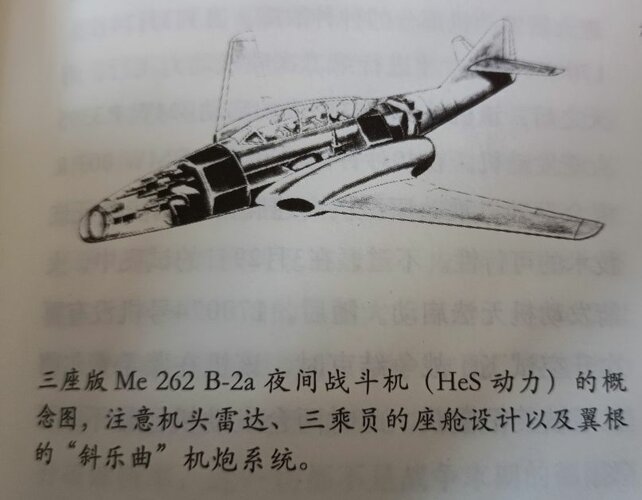
The wing sweep angle was increased, and the crew was increased from 2 to 3 people. The two HeS 011 A/B engines are either wing-mounted or flush-mounted at the wing root. Note that the "Schräge Musik" cannon system is also installed on the wing root.
!!!This is just a concept map, not a real plane!!!
Me262 and "Drawbar" bomb pylon

This is a hollow rigid tube 4 meters long and 10 cm in diameter, which is mounted under the tail of the Me 262 through a two-way joint, and at the end of the (bomb) pylon, there is a 1000 kg bomb or a 900L drop tank. A small wooden wing is mounted at the top to provide lift.
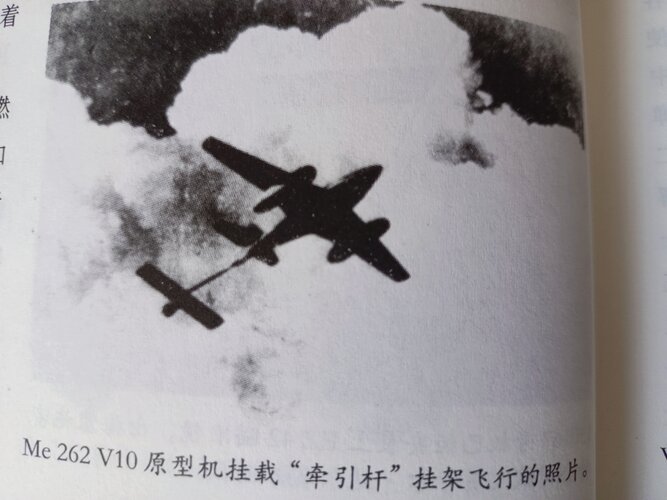
During take off, the bomb or fuel tank is placed on a small trailer, and the trolley and bomb are separated from the bomb after liftoff by blasting bolts.If an auxiliary tank is attached, the fuel in the tank will be fed into the main tank through a hollow pipe.If the bomb is mounted, the pilot will lock onto the target through the Revi reflective sight and begin a dive at a small angle. After aiming at the target, press the button, the explosive bolt at the junction of this pylon, and the bomb falls, explodes. Finally, the entire "towbar" pylons will be completely thrown away.
According to the technicians' vision, this pylony is a better solution. But on October 22, 1944, the Me262 V10 prototype underwent a theoretical experiment. The end result: this pylons are quite dangerous, due to the high lift coefficient of the wooden wings, the flight speed can only be below 330km/h, and the towbar will float around. Most importantly, the accuracy of this bombing is simply too low!!! Eventually, the concept proved to be useless, and trials of the "towbar" pylons were terminated.
Me262 and X-4 missile
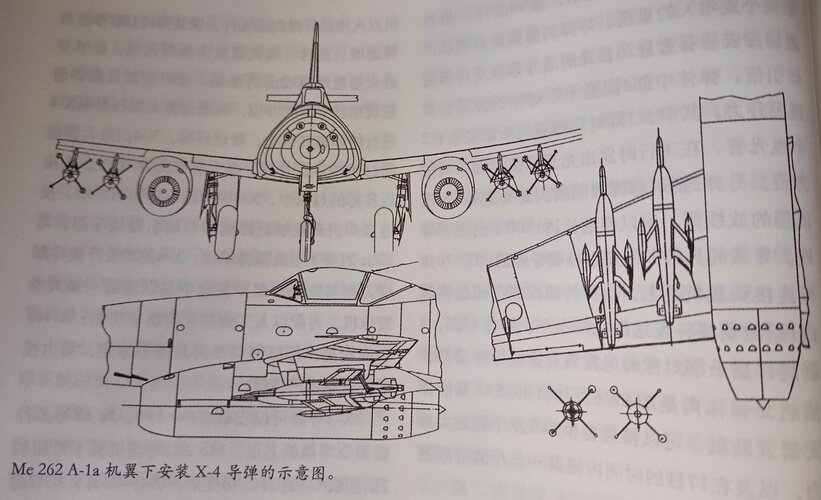
(I will not send out the structure diagram of the X-4 missile, please reply to me if you need it)
The X-4 required manual operation by the pilot, which was simply impossible for the single-seat Me262. The program envisages the Me262 with four X-4 missiles.
In the end,This is a schematic diagram of the structure of the Me 262.(Self-translation required)
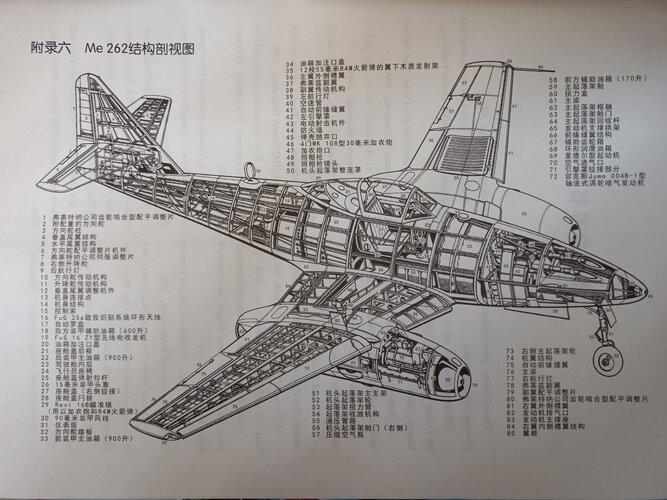
That's it,I hope you can enjoy it!
Last edited:

02/28/2009. Remarks by Johan Visschedijk: "In an attempt to fight the large allied bomber packs that flew over Germany in late 1944 - early 1945, Messerschmitt fitted a Me 262 A-1a (c/n 130083) with an 1.97 in (50 mm) Mauser BK 5 cannon, to become a Pulkzerstörer (formation destroyer). After initial testing at the companies test field at Lager-Lechfeld, two more Me 262 A-1a's, c/n 111899 and 170083, were converted and designated Me 262 A-1a/U4. Wearing the test code 'V899' and 'V083' respectively, they were flown and tested from Lager-Lechfeld during March and April, 1945.
On April 16, 1945, a Me 262 A-1a/U4 was reported engaging a formation of B-26 Marauders, however, this report is likely erroneously, as there is no record of such an engagement.
The 'V899' and 'V083' were fitted with a 50 mm Rheinmetall-Mauser Mk.214A V3 cannon with a very efficient hydraulic recoil-damping system. It carried 22 projectiles of 4 lb (1.54 kg) each, that could be fired at a rate of 45 rounds/min. The entire nose section was redesigned for the large and heavy (1,080 lb, 490 kg) cannon, while the nose wheel mechanism was reconstructed to swivel 90º to retract horizontally into the bay beneath the cannon.
The pictured aircraft ('V083') was found early May 1945 at Lager-Lechfeld by Colonel Harold E. Watson and his team (known as 'Watson´s Whizzers'), while retrieving valuable technology and equipment to be ferried back to the USA. Initially named 'Wilma Jeanne' (after the wife of 'Watson's Whizzer' Master-Sergeant Eugene Freiburger), and later renamed 'Happy Hunter II' (after Watson's son), the aircraft was flown by Messerschmitt's Chief Test Pilot Karl Baur, while the American team conducted ground firing test, to be impressed by the recoil-damping system that hardly moved the aircraft.
To be shipped from Cherbourg, France, to Newark, New Jersey, USA aboard the HMS 'Reaper' on July 19, 1945, 'V083' was ferried from Lager-Lechfeld to Melun (near Paris), France, by Colonel Watson on June 10. On June 30, Messerschmitt's test pilot Ludwig 'Willi' Hofmann departed Melun for the final stage to Cherbourg. As a result to a disintegrating turbine disk the aircraft encountered severe vibration causing a tail plane malfunctioning, followed by an uncontrollable dive. At a speed of 500 mph (805 kmh) Hoffman bailed out to safety, sustaining several contusions and severe bruising, reportedly the aircraft crashed at Jersey, some 35 ml (60 km) from Cherbourg."
Imperialist
Shipbucket FD-Scale Artist
- Joined
- 18 December 2013
- Messages
- 19
- Reaction score
- 10
Hi all,
Long time no talk as I usually lurk on SP , but picked back up drawing the 262 for FD Shipbucket after putting it on hiatus for a *long* time.
, but picked back up drawing the 262 for FD Shipbucket after putting it on hiatus for a *long* time.
Just one question:
For the behelfsnachtjager projects, are they based on the B-1a variant with a "razorback" canopy towards the rear, or are they more of a "bubble" type canopy like in the B-2a variants? Was looking through the image again and notice that the top 262 in the image wasn't quite as same as the ones below it.
A quick snippet from the image on post #247, and a rough interpretation attached to visualize the cockpit structure.


Edit: I'd also like to note that based on the sketch, other than the nose, the central fuselage doesn't seem stretched either like in the B-2a & B-2b variants, rather keeping the standard-length fuselage with the bubble canopy of the B-2a instead of the razorback B-1a.
Thanks,
Imp
Long time no talk as I usually lurk on SP
Just one question:
For the behelfsnachtjager projects, are they based on the B-1a variant with a "razorback" canopy towards the rear, or are they more of a "bubble" type canopy like in the B-2a variants? Was looking through the image again and notice that the top 262 in the image wasn't quite as same as the ones below it.
A quick snippet from the image on post #247, and a rough interpretation attached to visualize the cockpit structure.
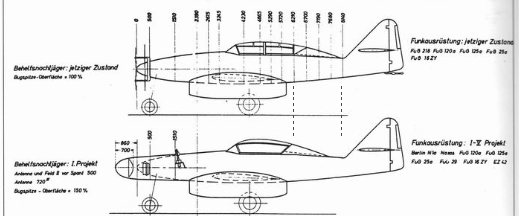
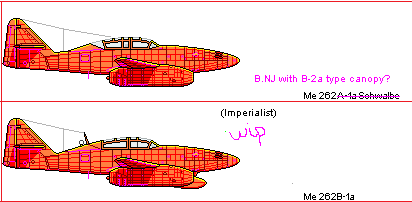
Edit: I'd also like to note that based on the sketch, other than the nose, the central fuselage doesn't seem stretched either like in the B-2a & B-2b variants, rather keeping the standard-length fuselage with the bubble canopy of the B-2a instead of the razorback B-1a.
Thanks,
Imp
Last edited:
Imperialist
Shipbucket FD-Scale Artist
- Joined
- 18 December 2013
- Messages
- 19
- Reaction score
- 10
If The National Redoubt/Alpine Redoubt were real, a Me-262 with folding wings would make perfect sense operating from a mountain tunnel or cave.This displaying is not to confirm anything,
but to ask,is this Messerschmitt Me.262T shipboard variant real or fake ?.
Flugzeug Classic 6/2002
- Joined
- 12 November 2021
- Messages
- 43
- Reaction score
- 88
Here is some great history on the Lorin Athodyd engine for the Messerschmitt Me.262 Lorin Luft '46 Jet Fighter Concept (1945). Interestingly enough Eugene Sanger and Irene Bredt (responsible for the creation of the Silbervogel) built a 2,400-lb thrust ramjet using Rene Lorin's patent and tested it on a Dornier Do17Z, then a 20,000-lb thrust class on a Do217. The Soviets tried to one-up everybody and put ramjets on Sanger's Silbervogel and call it the Keldysh Bomber. Interestingly enough the Sanger/Bredt engine was apparently conceptualized for a fighter - and the Me.262 was a perfect candidate.
The history on that can be found here:
The Me.262 Lorin can be seen here as a model:

 fantastic-plastic.com
fantastic-plastic.com
The history on that can be found here:
The Me.262 Lorin can be seen here as a model:

Messerschmitt Me.262 Lorin Luft '46 Jet Fighter by Tamiya
A 1:48 scale model kit of the Messerschmitt Me.262 Lorin Luft '46 Jet Fighter by Tamiya
Last edited:
- Joined
- 15 February 2024
- Messages
- 490
- Reaction score
- 1,288
I attach an original drawing of Me 262 with auxilliary ramjets, extracted from a report written by Eugen Sänger.Here is some great history on the Lorin Athodyd engine for the Messerschmitt Me.262 Lorin Luft '46 Jet Fighter Concept (1945). Interestingly enough Eugene Sanger and Irene Bredt (responsible for the creation of the Silbervogel) built a 2,400-lb thrust ramjet using Rene Lorin's patent and tested it on a Dornier Do17Z, then a 20,000-lb thrust class on a Do217. The Soviets tried to one-up everybody and put ramjets on Sanger's Silbervogel and call it the Keldysh Bomber. Interestingly enough the Sanger/Bredt engine was apparently conceptualized for a fighter - and the Me.262 was a perfect candidate.
The history on that can be found here:
The Me.262 Lorin can be seen here as a model:

Messerschmitt Me.262 Lorin Luft '46 Jet Fighter by Tamiya
A 1:48 scale model kit of the Messerschmitt Me.262 Lorin Luft '46 Jet Fighter by Tamiyafantastic-plastic.com
I need to clarify some points: René Lorin was the first to describe the principle of the "ramjet" or "athodyd", in French magazine L'Aérophile in May and November 1913.
His patent nr 390.256 is not about ramjet. It only describes a propulsive exhaust pipe system for aircraft piston engines. He never patented the ramjet principle. The first who has patented it was René Leduc, under nr 770.326 in June 1933. I attach also the corresponding illustrations from René Lorin and René Leduc first publications and patents.
Attachments
Last edited:
sgeorges4
I really should change my personal text
- Joined
- 8 October 2017
- Messages
- 665
- Reaction score
- 334
I wonder why the idea that making the 262 a bomber delayed it too much became so popular given that the bomber variant were already planned during the conception phase (the schnellbomber variants arein dan sharp volume 1 of luftwaffe secret jet and J-C mermet aéro journal special number on the 262). Even if it was deployed earlier, I feel it'd still have the same weaknesses and it seemed the me 262 had other problems than just being a bomber, hence even if it was deployed earlier, I wouldn't describe the 262 as a war winning weapon.
Thanks for your answers!
Thanks for your answers!
- Joined
- 8 March 2009
- Messages
- 1,048
- Reaction score
- 1,275
A very odd project that really doesn't fit in other threads; a prop powered tow car for shortening takeoff distances.



The best I can do reading the text:
"Studies were made of a tow car to shorten the take-off distance and aid the take-off of heavily-laden aircraft. The tow car consists of a four-wheel chasis driven by two DB 601 engines and is operated by a crew of two. The propellers are ????? to produce high thrust at low speed and are provided with adjustable reverse ???? for braking purposes. Car reaches a speed of 250km/hr on ???? ground and reduces take-off distances by ???."

 www.worthpoint.com
www.worthpoint.com
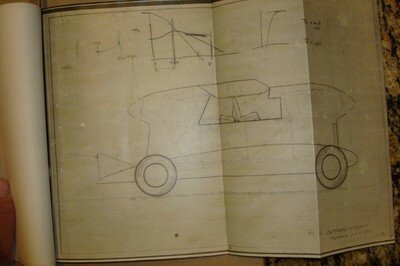
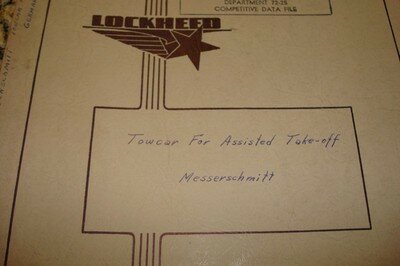
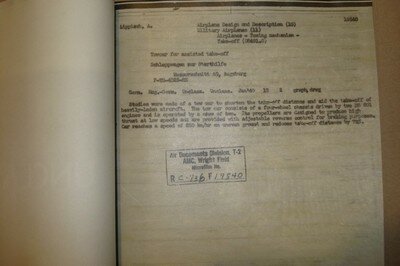
The best I can do reading the text:
"Studies were made of a tow car to shorten the take-off distance and aid the take-off of heavily-laden aircraft. The tow car consists of a four-wheel chasis driven by two DB 601 engines and is operated by a crew of two. The propellers are ????? to produce high thrust at low speed and are provided with adjustable reverse ???? for braking purposes. Car reaches a speed of 250km/hr on ???? ground and reduces take-off distances by ???."
MESSERSCHMITT TOWCAR FOR ASSISTED TAKE-OFF | #435348366
FOR SALE IS A REPORT ON THE MESSERSCHMITT FOR ASSISTED TAKE-OFF .....THIS IS REPRODUCED BY THE AIR DOCUMENTS DIVISION WRIGHT FIELD ............... THIS HAS 13 PAGES OF INFO, DATA, AND 1 DRAWING ......
Grzesio
ACCESS: Secret
Just one notice - RA 55 or Raketenautomat 55 was not a pod with multiple tubes like in your drawing. It was a belt fed automatic launcher with a single tube, roughly similar to the MK 108 cannon in appearance.
As we all know, Justo's drawings often contain a pronounced degree of “free interpretations”, although these are - in most cases - not pointed out.Just one notice - RA 55 or Raketenautomat 55 was not a pod with multiple tubes like in your drawing. It was a belt fed automatic launcher with a single tube, roughly similar to the MK 108 cannon in appearance.
As we all know, Justo's drawings often contain a pronounced degree of “free interpretations”, although these are - in most cases - not pointed out.
Attachments
Similar threads
-
Me 262/Fi-103R Reichenberg Mistel ? SO Aircraft ??
- Started by athpilot
- Replies: 55
-
-
Messerschmitt Me 262 Development & Politics by Dan Sharp
- Started by newsdeskdan
- Replies: 152
-
Messerschmitt Me 328 variants and projects
- Started by moin1900
- Replies: 77
-
Martin Model 262 Convoy Fighter: The Naval VTOL Turboprop Project of 1950
- Started by jzichek
- Replies: 20












